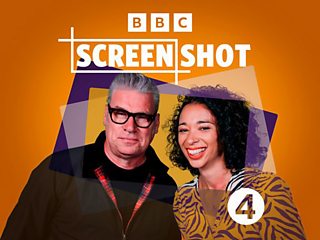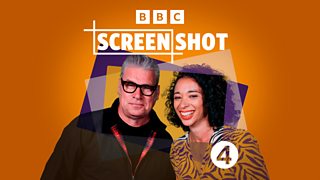How did method acting become so extreme?
Method acting. It’s a term we probably all know but don’t necessarily know what it means. It brings to mind Robert De Niro getting a job as a cabbie for Taxi Driver or Jared Leto terrorising his castmates to play The Joker. Basically, it’s become a byword for actors being pretentious and badly behaved in the name of art. But what is method acting really and where did it come from? In this episode of Screenshot, Ellen E. Jones and Mark Kermode get to the emotional core of The Method. Here’s a brief history of how it took over Hollywood.
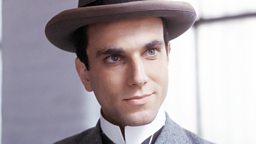
1890s 鈥� Stanislavski and The System
Before The Method was The Method it was The System. In late 19th century Russia, Konstantin Stanislavski, an actor, was bored with the overly emotive style of acting that was popular at the time. “Back then, good acting meant telegraphing emotion to the audience with these big symbolic gestures… almost like a series of dance moves,” says Ellen. Stanislavski thought this was all a bit much and not very convincing. “He hungered for something less theatrical and more real,” Ellen continues. “He co-founded the Moscow Art Theatre and developed a whole new naturalistic approach to acting known as The System.” In basic terms, his system was to teach actors to access their own emotions, to actually “feel” what their character was feeling, rather than pretend they were feeling it. He travelled the world teaching his ideas.
It was a controversial idea at the time, asking people to dig into their own pain just for the sake of being better in a movie.
1940s – The Method Hits Hollywood
In the late 1940s, Stanislavski’s lessons made it to America. His theories were seized upon by a number of acting teachers, most notably Lee Strasberg, who adapted Stanislavski’s System into what he called The Method. Ellen asks Isaac Butler, author of The Method: How The 20th Century Learned To Act, to explain it. “It’s most famous, or infamous, for the ‘effective memory exercise’,” he says, “which is where you use sensory details of really powerful past experiences to really unlock the emotions associated with that experience.” Your past trauma becomes your character’s emotional truth. It was a controversial idea at the time, asking people to dig into their own pain just for the sake of being better in a movie. “Strasberg got accused of practising unlicensed psychotherapy,” says Butler. If you’ve seen the Netflix film Blonde, you’ll no doubt remember scenes of Marilyn Monroe weeping on the floor as she remembers her own childhood trauma in an acting class. That’s The Method. Monroe studied under Strasberg.

1950s 鈥� The Method Boom
The Method gained popularity in the 1950s. Many cite Marlon Brando as the actor who changed things. His performance as Stanley Kowalski in A Streetcar Named Desire had a naturalism that made the stiff upper-lip acting that had been common in Hollywood look suddenly very old-fashioned. Isaac Butler argues Brando was not actually a method actor. “He did not study under Lee Strasberg,” he says, “but his performances were so powerful and ground-breaking and influential that everyone came to think, ‘Oh, that’s what method acting is.’” Brando studied under Stella Adler, who also adapted the teachings of Stanislavski (she was once taught by him), but her method was not “The” Method. She also hated Strasberg. “She thought he got Stanislavski wrong,” says Butler. “Adler’s methodology was more based around textual analysis and imagination and mastering the behaviours of the character.” So rather than access your own memories to inhabit a character, you would learn everything your character knew until you knew it as deeply. If your character irons a shirt in a scene, you iron shirts until you can do it in your sleep. If your character’s an athlete, you start running.

1970s – The Golden Age of Method
By the 1970s, actors were really into method acting, which had by now become a blanket term for any acting style that was very “immersive”. It was beloved by some of the greatest cinema actors in history, like Robert De Niro, Meryl Streep, Dustin Hoffman and Al Pacino. Butler calls Al Pacino in The Godfather one of the great method performances, showing his emotion in his face, not words or actions. “The way he charts this huge arc,” he says, “a lot of the movie was just him watching and thinking, then this new person erupts out of him by the end.” This was also when the wider public was becoming aware of method acting and finding it a bit ridiculous. For his role in Marathon Man, Dustin Hoffman famously stayed awake all night and ran before scenes, to be convincingly exhausted. His co-star, old-school actor Laurence Olivier, just as famously told him to “try acting, dear boy”. Actor Jason Isaacs defends Hoffman. “That’s all very well but Hoffman is magnificent in the film,” he says, “and Laurence Olivier, for all that he was the greatest actor ever to walk the English stage, wasn’t that great in front of the camera… Tell me [Hoffman’s] not elevating screen acting to one of the greatest human forms of art.”
1990s 鈥� The Method Becomes Madness
As more and more actors embraced method acting, there seemed to become a competition to be more method than anyone else. To play Jake LaMotta in 1980’s Raging Bull, Robert De Niro “became” a boxer and refused to ever break character. By the 90s, you had Daniel Day Lewis going to live in the woods and building his own house to get in character for The Crucible (Day Lewis later caught pneumonia on Gangs Of New York because he refused to wear a historically inaccurate warm coat between takes in the freezing winter). Method was giving actors licence to be absurd. “In most of those cases in a contemporary setting, we’re talking about people doing that sort of public idea of what The Method is, which is not actually The Method,” says Butler. “Nowhere would Lee Strasberg be okay with you sending a dead pig carcass to a castmate, as Jared Leto supposedly did when he played The Joker.” He says, “If you’re the kind of person prone to power-plays and difficult behaviour… [The Method] is a pretty ready-made excuse.”
Nowhere would Lee Strasberg be okay with you sending a dead pig carcass to a castmate.Isaac Butler
2010s – Method Goes Mainstream
While actors like Jared Leto might still be going very over the top, the lessons of method acting have now become so popular that they’re the mark of “good” acting, adopted even by those who aren’t method actors. Butler cites Olivia Colman in The Lost Daughter. Colman has never studied The Method and has never suggested she immerses herself in unusual ways, but her naturalistic performance is exactly the style The Method was meant to achieve. “That is an American-style, naturalistic performance,” Butler says. “It’s a demonstration of how no matter what your background, these norms and ideas of what good acting is supposed to be, they’re going to affect you.” If you’re a good screen actor in the 21st century, it’s almost certain you’re delivering a performance in the style of the original Method.
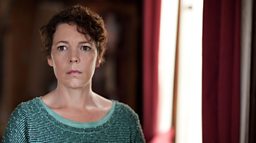
2020s 鈥� Modern method
Method acting is still being studied. The Actors Studio in New York, where Lee Strasberg taught, is still going. Ellen Burstyn, of Mark Kermode’s favourite movie The Exorcist, is its co-president. She still believes in The Method, which she sums up as “training the imagination to respond to imaginary circumstances” and credits it with helping her create Mark’s favourite performance. Actors Louise Brealey (Sherlock) and Adeel Akhtar (Sherwood) have both studied The Method. Brealey says she found it valuable as a tool, but it shouldn’t be taken too seriously. She doesn’t have much time for the image of the tortured method artist. “I think when Method goes wrong is when that ability to laugh at yourself is absent,” she says. “You get that combination of someone who’s intensely earnest, who maybe needs to do a bit of work on themselves but hasn’t got around to it yet, and they meet The Method… That combination can be a bit boring.” Akhtar agrees that the whole notion of actors staying in character throughout a shoot is bit indulgent. “I don’t think my wife would let me,” he laughs. “My kids pathologically can’t let me, because they have their needs. If I could I’d love to, but you have to leave it at work.” The Method still exists but maybe it’s lost its mystique.
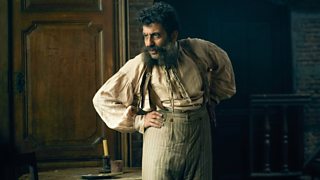
The Future – Will The Method die?
As it ages, might method acting become outdated, just as it made theatrical screen acting outdated? Butler thinks so, and he doesn’t think much of the alternative. “A new acting and writing style is emerging that is deeply panicked about confusing and boring the audience,” he says. “I have noticed… everything is getting much clearer. The mystery of the human condition is less and less present… There’s just less mystery.” Will method acting disappear entirely? It seems unlikely, but maybe one day we’ll fondly look back on the times when movie stars were disappearing into the woods or sending people dead pigs.
Listen to Screenshot: Method Acting
More from 麻豆官网首页入口 Radio 4
-
![]()
Screenshot: Marilyn Monroe
Ellen and Mark examine the enduring star power of the quintessential blonde bombshell.
-
![]()
Desert Island Discs: Dustin Hoffman
Hollywood film star Dustin Hoffman is interviewed by Kirsty Young.
-
![]()
Desert Island Discs: David Harewood
David Harewood, actor, shares the soundtrack of his life with Lauren Laverne.
-
![]()
This Cultural Life: Glenda Jackson
Actor and former MP Glenda Jackson reveals the influences and experiences that inspired her work on stage and screen.
